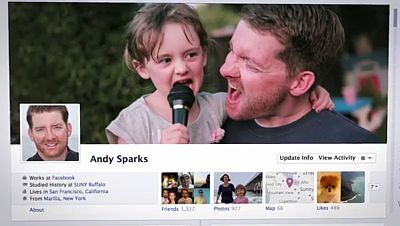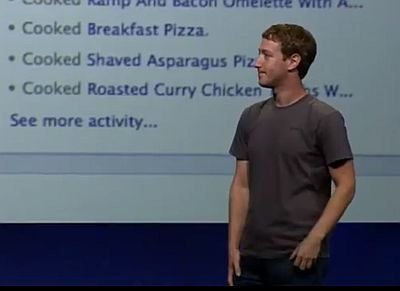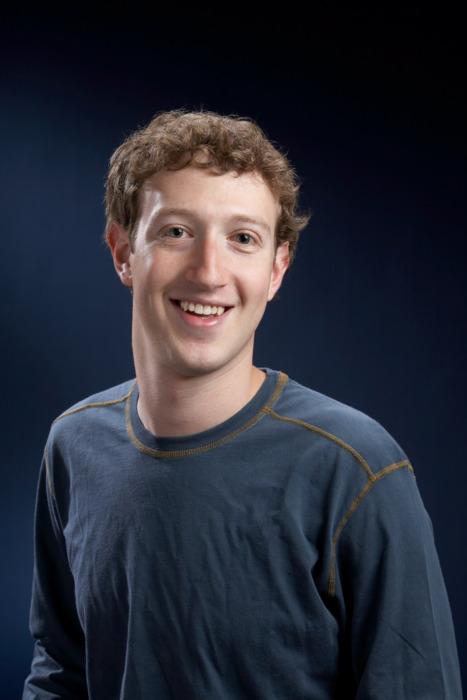"Timeline is the story of your life." —Mark Zuckerberg
"Nine beef consommés, one iced cucumber soup, one mussel soup." —Georges Perec, Attempt at an Inventory of the Liquid and Solid Foodstuffs Ingurgitated by Me in the Course of the Year Ninteen Hundred and Seventy-Four, 1976
Four months after Mark Zuckerberg first introduced it to the media, Facebook’s Timeline feature was rolled out in early December in New Zealand. Why New Zealand? Perhaps because the country makes for a relatively small control group and is marginal enough not to become an international center of outrage once it becomes clear that the company’s innovations, as is so often the case, are destined to kill your privacy.
Now Facebook has made Timeline available worldwide. It has fixed one notable problem with the feature since Zuckerberg unveiled it (it no longer outs you when you unfriend someone), but the fundamental approach of Timeline remains unchanged. What it does is reorganize your information and make it vastly more searchable, albeit by the same people whom you have given permission to view the information in the first place.
Still, this is no small difference. Previously, Facebook worked as a diary that couldn’t be browsed except by turning its pages backward one by one, in an extremely laborious and time-consuming manner, meaning that for all intents and purposes your old data wouldn’t be accessible except by somebody who took an inordinate amount of interest in it. Now Timeline places the things you have shared with Facebook along a chronological axis that can be navigated quickly and intuitively, allowing users to, say, jump back to somebody’s life in 2008, or view all the information you have put up in a particular category over time.
The easiest way to make sense of the change is to understand that your Facebook profile is henceforth no longer your (public) diary: It’s your biography. To underscore this point, Facebook invites you now to fill in the time before you joined the site. Consider my timeline:

The time between “born” and late 2008, when I joined Facebook, is currently blank, but I could fill it by uploading and giving dates to photos from my childhood or creating announcements and events to mark key moments in my life — say, my high school graduation, or when I moved to New Zealand. Facebook would like me to do that very much. That’s not just because the more information they have about me, the more valuable their product becomes to their advertisers, but also — and I suspect more importantly — because the more emotionally invested I become in their product, the deeper my engagement with it is likely to grow. Google+ has millions of users, yet nobody uses it. Facebook is used dailyeven by some of its most ardent critics. It’s always been its paradox.

The current promotional video for Timeline features a studiously ordinary subject: Andy Sparks. American, white, male, professional, married, one child: the typical default person that technology products and the contemporary way of life are marketed to and through. The montage technique used in the video sutures the conventional style of presentation of such lives in cinema and especially advertising with the design of Timeline itself, which thus becomes the film of you, the multimedia portfolio/résumé of who you are — bearing in mind that in the current zeitgeist the personal is the professional, and vice versa.
Sparks is listed as working for Facebook, but he is a fictional construct. When the company gave the first glimpse of Timeline at the f8 event in September, its capabilities were illustrated by the CEO using his own profile. This ought to have spoken of an all-but-ordinary life, yet there Zuckerberg was, spending time at work, travelling for work, getting a dog, minutely recording the food that he cookshimself: ”Ramp and bacon omelette, breakfast pizza, shaved asparagus pizza, roasted curry chicken thighs.”

The lingering of this detail on the big screen behind Zuckerberg at the Timeline launch reminded me of the Georges Perec piece, originally published in Action Poétique, purporting to be the inventory of the foodstuffs he had eaten in the year 1974. For what is that model Facebook profile about if not elevating the ordinariness of life into a work of art?
Recording minutiae and the kinds of things that would happen to anybody is what Facebook has always been best at — and it would be churlish to criticise the company for it. Note, however, the two very different ways one’s Timeline is populated. On the one hand, there is the regular accretion of the status updates and assorted daily activities, which up until now were never meant to form part of a permanent biography but could be assumed to have a very fleeting lifespan. On the other, there is the more carefully selected and presented information that the users supply in order to fill the gaps in their digitally documented past thanks to the new feature. “It’s really cool,” said Zuckerberg to the f8 crowd. “It’s really fun and easy to fill your timeline with all the stories from your past.”
And cool and fun and easy it may be, but it’s qualitatively and conceptually different from having all your updates republished as part of the new profile, which is the first thing that will happen to every one of the 800 million existing Facebook users during Timeline’s roll-out. And if you don’t like that — if you don’t, in fact, want to have your biography go to print without so much as an opportunity to look at the proofs — I’m afraid you’re going to have to go back and edit it, bit by excruciating bit, as soon as Timeline lands on your profile.
This is a far-from-insignificant demand on a person’s time, and not just because the older, more active Facebook users will find it a very time-consuming and fraught task. It also amounts to a sudden repurposing of personal information that was entered in a different writing space under very different assumptions.
Needless to say, there is, as is customary with these “free” services, no way to opt out from the redesign. You can only opt in sooner, if you’re especially eager.
Zuck has.

The cover image of Zuckerberg’s life story is the quintessential ingratiating device of digital social networking: a pet’s photo. Rather more surprisingly, however, and contrary to the f8 presentation, the CEO hasn’t really bothered to fill in his life before Facebook. He writes that he was born in 1984 in the helpfully geolocated town of Dobbs Ferry, New York, but he doesn’t post a baby picture. Then nothing until 1998, when he “started school at Ardsley High School.” Then, in 2000, the first picture, from his time at the Phillips Exeter Academy. In 2004 he starts work on Facebook, with the intent of “making the world more open and connected.” Finally, on February 11, 2004, he joins the actual Facebook, and the rest is, well, not quite history, apparently, because even from this point onward Zuckerberg’s profile appears uncreditably sparse. Did he not use his own network? Has he purged it for public consumption? And if so, when, and why? Remember, this is the person who wants you to share more, and for whom “having two identities for yourself is an example of a lack of integrity.”
So what happened? One clue may be in the wonderfully pointed reminder right under the Timeline cover.

You and Mark aren’t friends, and furthermore you cannot become friends with Mark, seeing as he is one of those superusers (ordinary users can’t have more than 5,000 friends; Zuckerberg has over 10 million), therefore feel free to subscribe to his updates but be mindful that that’s as far as it will ever go.
If Zuckerberg’s profile is in fact sanitized — and I want to believe that it is; nobody could be this uninteresting in real life — his public positions on privacy would be hypocritical, to no one’s surprise. Nor is it surprising that this so-called Mark Zuckerberg is simply the generic face of the company, a PR construct, just like Andy Sparks. But the effacing work that goes into that, well, that is something.
There is another Mark Zuckerberg out there who must be quite a remarkable person, with quirks and oddities and a personality that is likely to match his consuming ambition and his fabulous wealth. With darknesses, too, with secrets beyond the amount for which his lawsuits were settled. With kinks, perhaps, even — certainly with relationships whose history is not exhausted by acts of friending and unfriending, loving and ceasing to love. But we don’t get to see any of that. Instead, we get to subscribe to the updates of the authorized Mark Zuckerberg, Timeline’s model subject, at once a consumer and an object of consumption, who,like the type of the well-adjusted, shows us the aspects of ourselves it is OK to put on show, and who it is OK for us to be, if we wish for success, acceptance, and soon — who knows? — citizenship itself.
Except lives are never that transparent; therefore they cannot be made that opaque. For Perec had it right: There may be a depth of political, existential meaning in the seemingly insignificant details, say, in the food that you cook or consume, in the places you visit in your free time — what you reveal about them, how you write them — and there is no template, no amount of boilerplate that will erase that. That slightly clichéd fear — that no matter how careful we are on the networks, we cannot hide our true selves — is nonetheless real.
Ramp and bacon omelette, breakfast pizza, shaved asparagus pizza, roasted curry chicken thighs.
